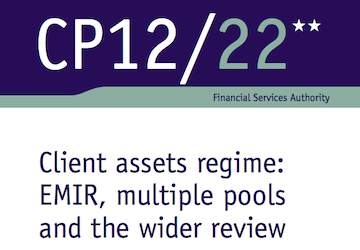The Financial Services Authority has released a combined consultation and discussion paper on changes to client money and assets held by investment firms.
It said these changes could lead to the most 'radical shift' in the protection of client money and assets for the past 20 years.
The European Markets Infrastructure Regulation (EMIR) is also imposing client money changes.
The paper 'CP12/22 Client assets regime: EMIR, multiple pools and the wider review' is split into three parts.
Part One of the paper covers changes required by EMIR meaning if a firm fails the client assets can be transferred to another firm and continue to be traded instead of being pooled together and distributed back to clients.
Part Two is the introduction of multiple client money pools which will allow firms to separate client money into sub-pools instead of holding them all in a single pool. This could restrict client shortfall and mean more rapid distribution of client money.
Part Three will cover achieving better results within the client assets regime. It will take account of lessons learnt from insolvencies such as Lehman Brothers and aim to improve the speed of returning client assets, reduce the market impact of insolvency and achieve a greater return of client assets to clients.
Richard Sutcliffe, FSA's client assets unit leader, said: "The protection of client assets remains a key priority for the FSA and today's proposals will go a long way to ensure confidence in UK markets is maintained.
"In addition to the changes required by EMIR the FSA proposals will lead to the most radical changes in the client asset regime in over 20 years with the introduction of client money sub-pools that are designed to bring further safeguards to the industry.
"Furthermore, the fundamental review of our client assets regime also invites debate on the changes required following the lessons learned from ongoing insolvencies."
The consultation period for Part One ends on 16 October and 30 November for Part Two and Three.
• Want to receive a free weekly summary of the best news stories from our website? Just go to home page and submit your name and email address. If you are already logged in you will need to log out to see the e-newsletter sign up. You can then log in again.

